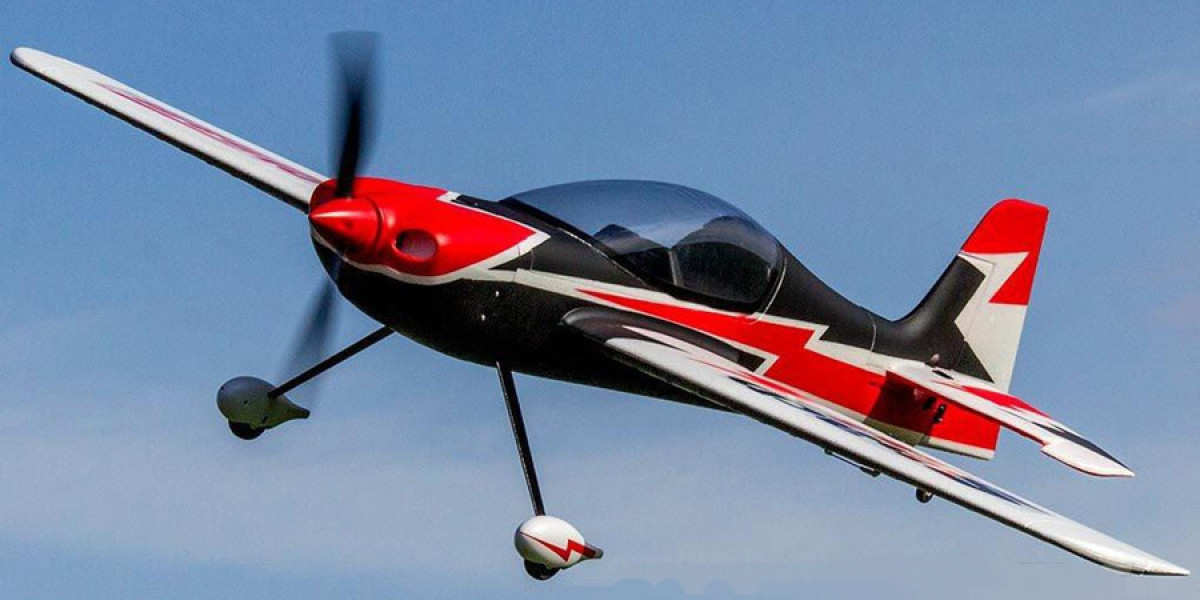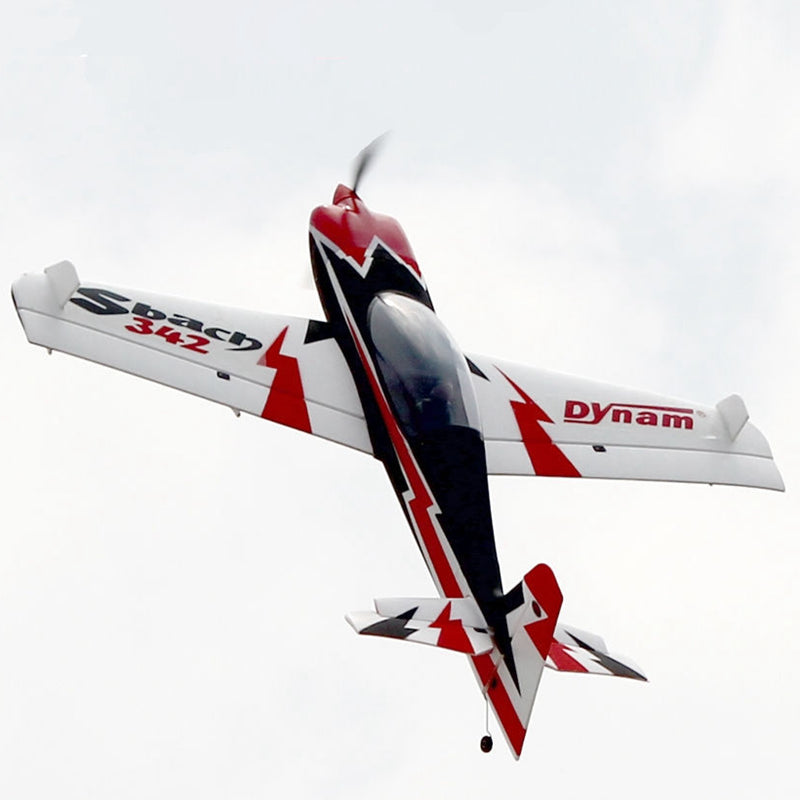When hobbyists ask, “What does 3D mean in RC planes?” they’re often referring to aerobatic maneuvers that defy conventional flight physics. Unlike traditional RC flying—think graceful loops or smooth inverted passes—3D RC aircraft are engineered to perform extreme stunts like hovering, torque rolling, and knife-edge spins. These maneuvers require planes to operate at near-zero airspeed, relying on high-power systems, lightweight frames, and oversized control surfaces for precision.
In essence, 3D flying transforms your RC plane into a sky-bound ballet dancer. But achieving this level of performance demands more than just skill; it starts with the right aircraft. Enter Dynam, a brand synonymous with accessible, high-quality 3D RC models.
Dynam Sbach 342: A Legend in 3D RC Aviation
The Legacy of Dynam’s Sbach 342
The Dynam Sbach 342 isn’t just another 3D RC aircraft—it’s a modern classic. Inspired by the real-world Sbach 342 aerobatic plane, this model debuted in the early 2010s as a game-changer for intermediate to advanced pilots. Its design philosophy balances agility and stability, making it a versatile choice for both sport flying and hardcore 3D routines.
Dynam’s engineers focused on three pillars:
Power-to-weight ratio: A lightweight EPO foam airframe paired with a robust 4S-compatible motor.
Control authority: Massive ailerons, elevator, and rudder surfaces for extreme deflection.
Durability: Reinforced landing gear and shock-absorbing components for rough landings.
Key Features of the Dynam Sbach 342
Wingspan: 1250mm (49.2 inches) for optimal stability in low-speed maneuvers.
Motor: BL4250-KV500 brushless outrunner (4S LiPo compatible).
Battery: 14.8V 2200–2600mAh LiPo (ideal for 5–7 minutes of aggressive flying).
Control Surfaces: Hinged with nylon for 45°+ deflection.
Weight: 1600g (3.5 lbs) ready-to-fly.
My Hands-On Experience with the Dynam Sbach 342
First Flight Impressions
As someone who’s flown everything from warbirds to competition-grade 3D models, I was skeptical about the Dynam Sbach 342’s “affordable” price tag. But within minutes of unboxing, I realized this plane punches above its weight.
The assembly was straightforward—just attaching the wings, connecting the pushrods, and binding my Futaba transmitter. The pre-installed 60A ESC and metal-gear servos signaled Dynam’s commitment to reliability.
Performance in the Air
On a crisp morning at my local flying field, I throttled up the Sbach 342 with a 4S 2600mAh pack. The vertical climb was effortless, hitting 200 feet in under 3 seconds. But the real magic happened during 3D maneuvers:
Hovering: The plane locked into a stable hover at 60% throttle, responding crisply to rudder adjustments.
Harrier Rolls: With full-rate aileron deflection, it rolled like a drill bit while maintaining a nose-high attitude.
Knife-Edge Circuits: The oversized rudder held the plane sideways with minimal coupling—no elevator mix needed.
However, the Sbach 342 isn’t flawless. At 1600g, it’s slightly heavier than premium carbon-reinforced models, which affects recovery speed during high-alpha mistakes. But for its price range, it’s a stellar performer.
Technical Breakdown: Why the Sbach 342 Excels in 3D
Aerodynamic Design
The Sbach’s semi-symmetrical wing and squared-off fuselage create a perfect balance of lift and maneuverability. The large horizontal stabilizer ensures pitch authority, even in post-stall conditions.
Power System Optimization
Dynam’s choice of a KV500 motor on 4S delivers 1100+ watts of power. Paired with a 13x6.5 propeller, it generates enough thrust to hover at a 1:1 thrust-to-weight ratio—critical for sustained 3D flight.
Durability Enhancements
Landing Gear: Aluminum struts with rubber-sprung wheels absorb rough grass landings.
Foam Composition: EPO foam flexes on impact, reducing hangar rash.
Reinforced Hinges: Nylon hinges with CA glue slots for easy repairs.
Frequently Asked Questions (FAQ) About 3D RC Aircraft
Q: Can beginners fly 3D RC planes like the Dynam Sbach 342?
A: While the Sbach is forgiving for its class, true 3D flying demands advanced stick skills. Start with a high-wing trainer before transitioning.
Q: What’s the difference between 3D and sport RC planes?
A: Sport planes prioritize speed and smooth aerobatics, while 3D models focus on low-speed agility and extreme control surface deflection.
Q: How do I maintain my Dynam Sbach 342?
A: Regularly check servo gears for stripping, balance your propellers, and keep the motor free of debris.
Comparing the Dynam Sbach 342 to Competitors
| Feature | Dynam Sbach 342 | Extreme Flight 48" Extra | E-flite Ultimate 3D |
|---|---|---|---|
| Price | $229 | $549 | $399 |
| Wingspan | 1250mm | 1220mm | 1100mm |
| Power System | 4S Brushless | 6S Brushless | 3S/4S Brushless |
| Skill Level | Intermediate/Advanced | Expert | Intermediate |
| Repairability | High (EPO foam) | Moderate (balsa/ply) | Moderate (Z-Foam) |
Final Thoughts: Is the Dynam Sbach 342 Worth It?
After 50+ flights on my Sbach 342, I’ve concluded it’s one of the best values in 3D RC aircraft. It won’t replace a $1,000 carbon-fiber beast, but it delivers 85% of the performance at a third of the cost. For pilots ready to explore 3D without emptying their wallets, this plane is a no-brainer.
Whether you’re practicing rolling harriers or just love the adrenaline of hovering 10 feet off the deck, the Dynam Sbach 342 earns its place in any serious RC hangar.









